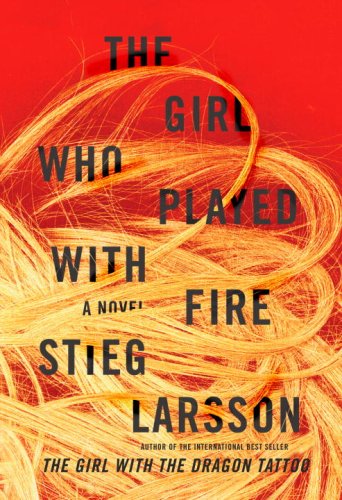 I enjoyed the second book in Larsson’s Millenium Trilogy in a different way than I enjoyed The Girl With the Dragon Tattoo (book review / movie review). In the first book, it’s very much about the mystery at hand, and through solving it, you come to care about Lisbeth Salander. Even though she’s odd, anti-social and a bit weird, she has morals and integrity. The second book, The Girl Who Played With Fire , takes places after the first book, but delves more deeply into Lisbeth’s past.
I enjoyed the second book in Larsson’s Millenium Trilogy in a different way than I enjoyed The Girl With the Dragon Tattoo (book review / movie review). In the first book, it’s very much about the mystery at hand, and through solving it, you come to care about Lisbeth Salander. Even though she’s odd, anti-social and a bit weird, she has morals and integrity. The second book, The Girl Who Played With Fire , takes places after the first book, but delves more deeply into Lisbeth’s past.
A few weeks before Dag Svensson, a freelance journalist, plans to publish a story that exposes important people involved in Sweden’s sex trafficking business based on research conducted by his girlfriend, Mia Johansson, a criminologist and gender studies scholar, the couple are shot to death in their Stockholm apartment. Salander, who has a history of violent tendencies, becomes the prime suspect after the police find her fingerprints on the murder weapon. While Blomkvist strives to clear Salander of the crime, some far-fetched twists help ensure her survival.
[From Publisher’s Weekly]
One of the things that I noticed more in this book compared to The Girl With The Dragon Tattoo, was translation. I’m not sure if it was the word choices by the author, Stieg Larsson, or translated terms as determined by Reg Keeland. One of the things that bugged me the most was reference to “All the Evil” which is what happened to Lisbeth when she was twelve and sent to a psychiatric hospital. The term “All the Evil” was used by Lisbeth, Blomkvist, and other characters in reference to these past events. I think something must have been lost in translation, perhaps a colloquial term that roughly translates to “all the evil”.
I don’t think the story grabbed me as much, because I already know there is a third book about Lisbeth. However, I definitely wanted to keep reading and see how the story concluded. Some reviews have criticized certain mystery novel methods as clunky and suggested that Larsson would have revised them if he’d been alive. I only noticed a couple things, where it seemed too convenient or coincidental, but obviously real life isn’t as exciting as a thriller/mystery novel.
Overall it was a great story and I can’t wait to read The Girl Who Kicked The Hornet’s Nest. I’m hoping we’ll learn more about Lisbeth’s sister Camilla, who was only mentioned in the first book, and sparingly talked about in this book.






July 12, 2010 at 8:10 am
My cousin translates for a Spanish author, and she actually wrote it into her will that he is the only person authorized to translate ANYTHING of hers. (She’s alive and well, as far as I know, but you get my point, I hope?)
That’s why I like to read books in their original language when possible, but alas, I’m down to Latin and English these days; my French is no longer good enough. At least when I do my own translating in my head, I KNOW I’m being too literal.
July 13, 2010 at 7:07 am
Everyone keeps raving about these books, but its good to hear an alternate perspective. I have all three and hope to read them sometime this summer. I did take a couple days off for my birthday, so I may start reading them then.
July 13, 2010 at 10:07 am
It was certainly a good book, but the first book was better. It’s just so hard to follow up from the first book in a series.